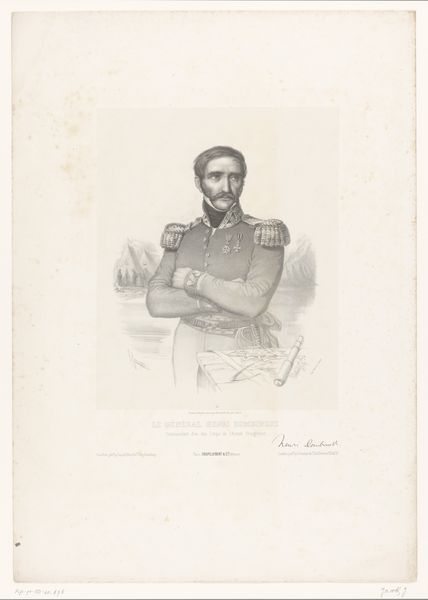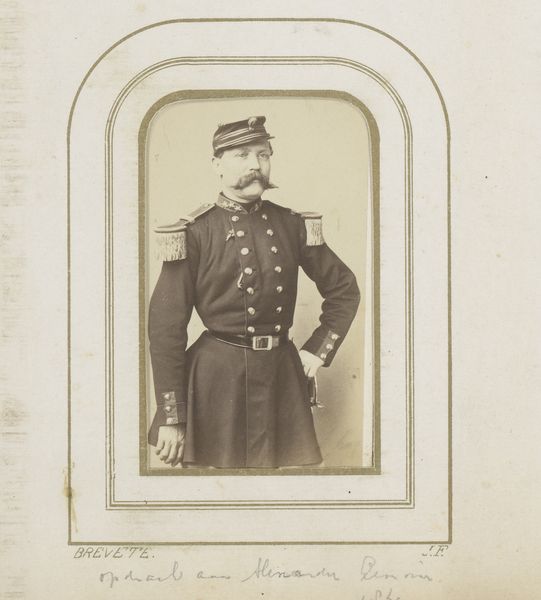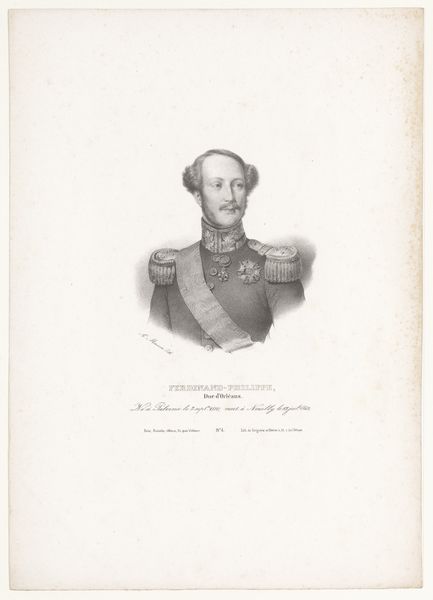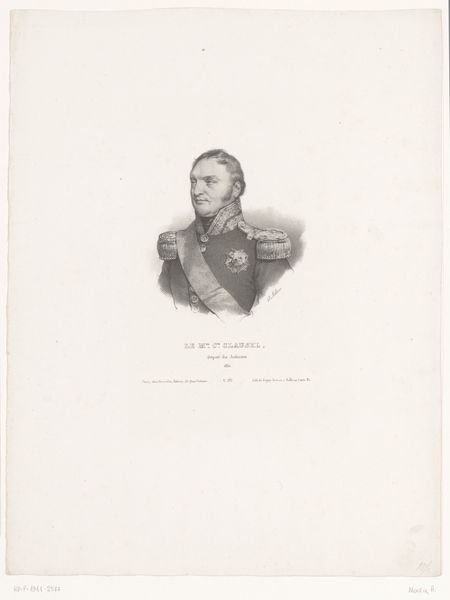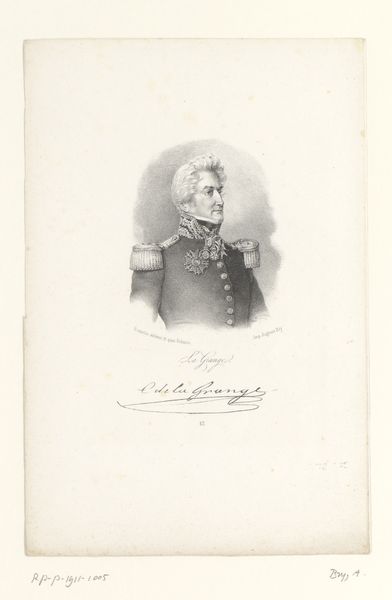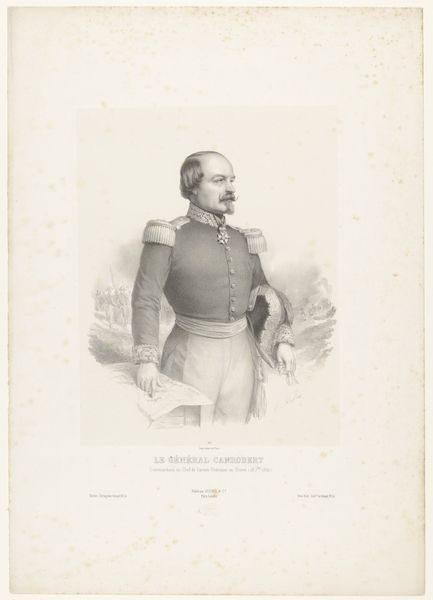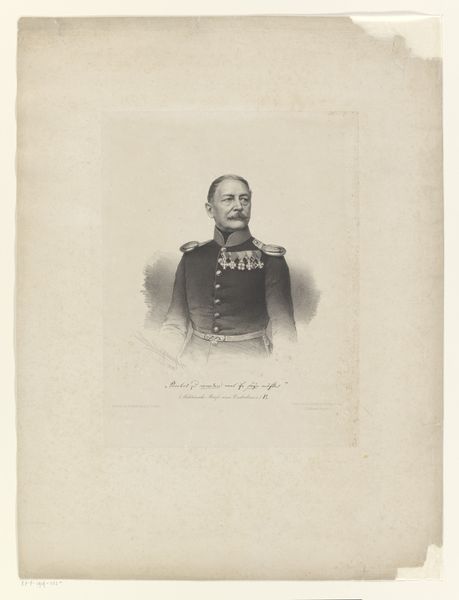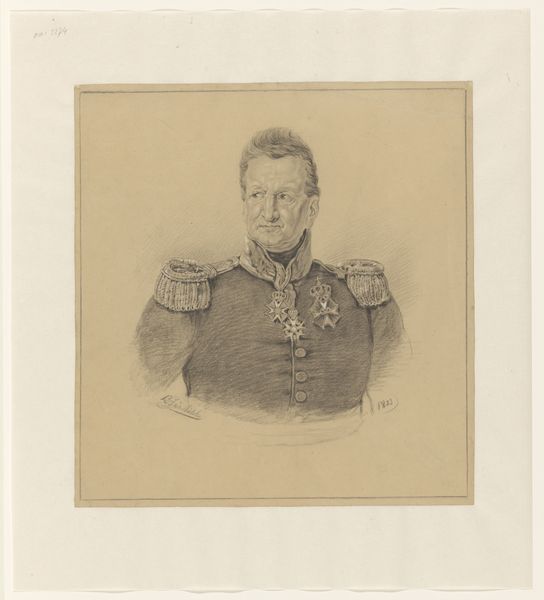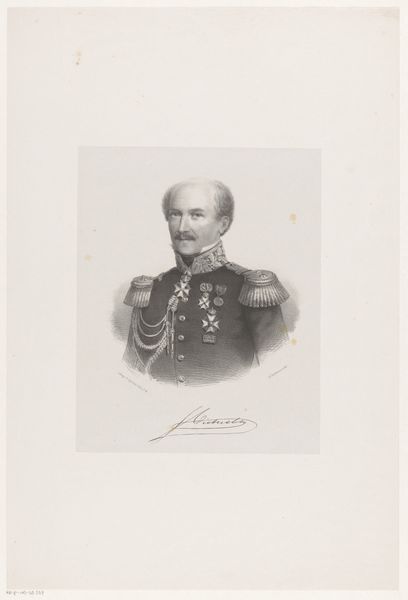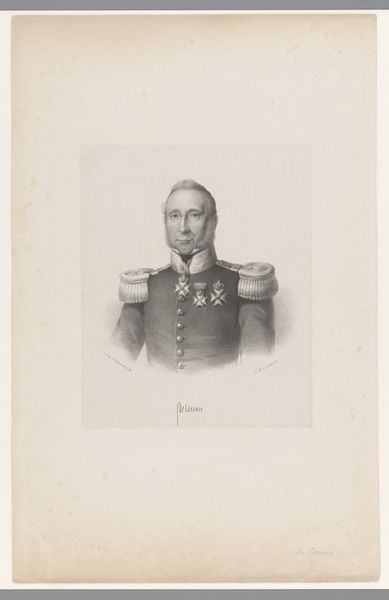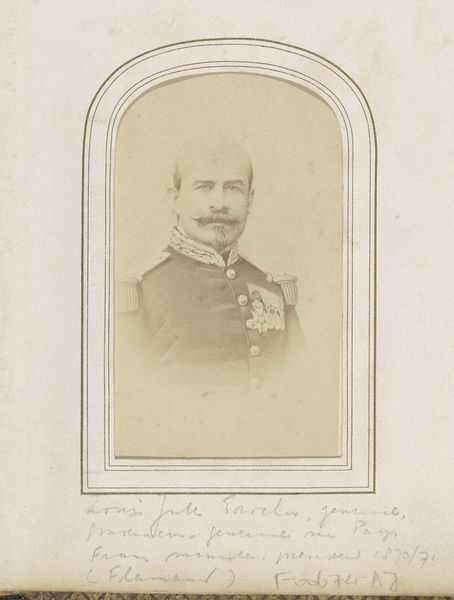
print, engraving
#
portrait
#
pencil drawn
#
neoclacissism
# print
#
old engraving style
#
figuration
#
personal sketchbook
#
19th century
#
history-painting
#
academic-art
#
engraving
#
realism
Dimensions: height 383 mm, width 272 mm
Copyright: Rijks Museum: Open Domain
Curator: Good day. Today, we're observing a print crafted between 1830 and 1835, a portrait of Louis-Adolph Le Doulcet, Comte de Pontécoulant, brought to life by Jacques Sturm. The artistry lies in engraving. What's your initial impression? Editor: Intriguing! The precision… it almost feels like I'm peering into the Comte’s very soul through his spectacles. There’s a curious tension—austere yet intimate, powerful yet… somehwat melancholic? Curator: That’s a sharp observation. This academic-style engraving employs neoclassicist elements. There’s a clear nod to history-painting in the detailed figuration, and Sturm renders it with striking realism for a print. Editor: Indeed, the weight of his position, *Commandant le Chef des Bataillons/Legion Belge parisienne,* if I read correctly, is quite visible. The symbolic load here is interesting, especially given the little vignette beneath. The crowd of people, the raised flag—what do you make of their inclusion? Curator: It suggests the Comte’s involvement in civic or military leadership. Consider that visual vocabulary—flags, uniforms—are cultural symbols deeply entwined with notions of duty, nation, and, crucially, memory. Sturm leverages these familiar emblems to enhance the subject's gravitas. But beyond the immediate reading, it might hint at political leanings or a specific event central to his identity. Editor: Right. It almost seems he is both grounded in, yet set apart, from the very idea of citizenry depicted below. Perhaps there is an implied duality: public servant versus private person. Curator: And isn’t that what a skilled portrait achieves? It’s not merely a representation, but a story woven from cultural and personal symbols, meant to linger in the collective memory. Editor: Yes, a story meticulously etched into being, prompting us to decipher, contemplate, and perhaps even rewrite our understandings of the past. Sturm hands us clues, not conclusions. Curator: And that ambiguity allows the piece to resonate long after we’ve moved on. An echo of a person, of a time… a visual whisper inviting interpretation.
Comments
No comments
Be the first to comment and join the conversation on the ultimate creative platform.
